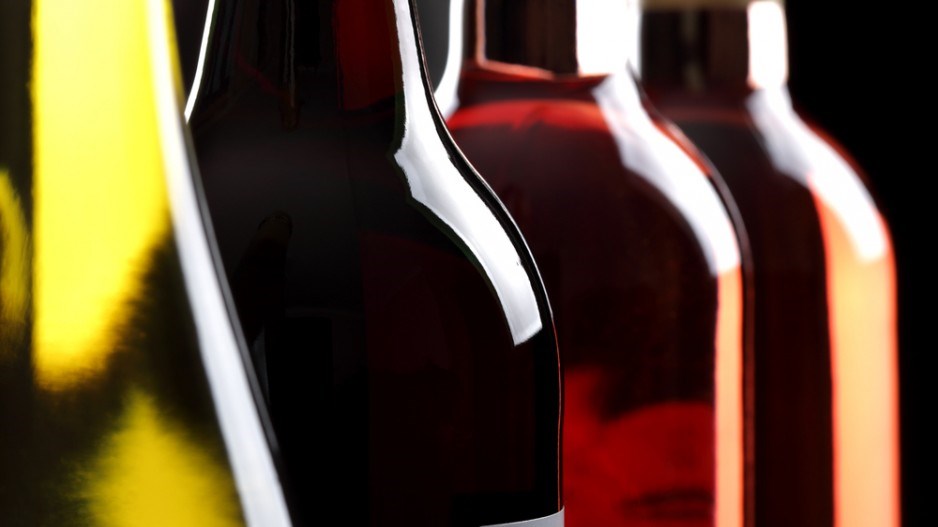BC's wine industry has had a stellar run over the past decade, growing to 221 wineries from just 87 in 2003, and enjoying market share rise on the backs of enthusiasm for local food and good wine. The average price a bottle of B.C. wine fetched in the marketplace rose steadily, allowing producers to make headway towards recouping the millions spent developing their properties.
Now, many are wondering if the run is over. A handful of wineries are listed for sale; several others are being shopped around quietly in the hope of maintaining an air of business-as-usual.
This year, properties such as Hollywood and Wine – now Saxon Winery Ltd. – in Summerland and the Fort Wine Co. in Fort Langley have sold – the former to a Calgary buyer and the latter (according to industry buzz) to an offshore group.
Sonoran Estate Winery in Summerland is listed in three lots totalling $7.9 million, while Herder Winery & Vineyard Inc. in Keremeos is listed for $3.5 million. On Vancouver Island, Glenterra Vineyards is listed for just under $2 million.
Many owners are seeking outside capital as competition tightens and domestic sales growth stalls.
"B.C. has never had to sell wines outside of B.C.," said Rob Ingram, CEO of Terrabella Wineries Ltd. and a partner in Collective Winery Consultants Inc. "There's been tremendous support from the B.C. consumer, but we're looking at a potential 50% increase in the grape supply in the next three years, and consumption of VQA wines has actually levelled off."
BC VQA wines – those made solely from B.C.-grown grapes and deemed free of faults by a tasting panel – claim approximately 19% of the B.C. market by dollar sales, down from a peak of 20.4% in 2010 but well below the industry's long-standing goal of approximately 23%.
Ingram sees B.C. vintners being able to sell just 60% of what they make domestically as harvests increase and production rises over the next three years. But to grow, wineries need cash – something that's in chronically short supply.Banks typically extend an operating line of credit to wineries producing more than 5,000 cases (or about $1 million in sales), Ingram says, but the rest – about 80% of the B.C. industry – need to juggle production year-to-year and keep close tabs on cash flow, bootstrapping operations and seeking regular infusions of capital.
"It's very hard for small wineries to grow without support," Ingram said. "You can predict your costs, but you can't predict your sales."
That's where Terrabella comes in. It consolidates profitable wineries within a single corporate entity to achieve efficiencies of scale that reduce costs and bolster marketing clout.
Terrabella has raised $7.5 million to date, acquiring Naramata's Perseus Winery and an 18-acre vineyard adjacent to Quails' Gate Estate Winery in West Kelowna where it hopes to build a second winery. Discussions are progressing toward a third purchase, one of 10 opportunities surveyed this past summer.
With backing from Bay Street players, Ingram aims to take Terrabella public within two years.
But he expects most wineries to hold their own, working with accumulated equity to grow slowly.
What's keeping many owners in the game are land values – a double-edged sword.
Back in the 1980s, it was possible to get vineyard land for $300 an acre. By the 1990s, as the industry proved itself, values crept up to $5,000 an acre. Today, vineyard land fetches at least $100,000 an acre.
That's good news for those who bought early and can tap accumulated equity for new financing; but those who bought in the mid-2000s as values crested $200,000 an acre face tough decisions.
"They're hanging on because they're not going to get out of it right now what they paid," said Laurie Kingsfield, an agent in Okanagan Falls with Penticton-based Royal LePage Locations West.
While demand for vineyards and wineries is steady, owners who bought at the peak of the market don't want to lose money by selling now that prices have moderated. "It's a buyer's market right now, really, because vineyard prices are definitely down from what they were," Kingsfield said. "People that bought in 2006, 2007 maybe paid $150,000 an acre, and that same acre is worth maybe $100,000 today." •




